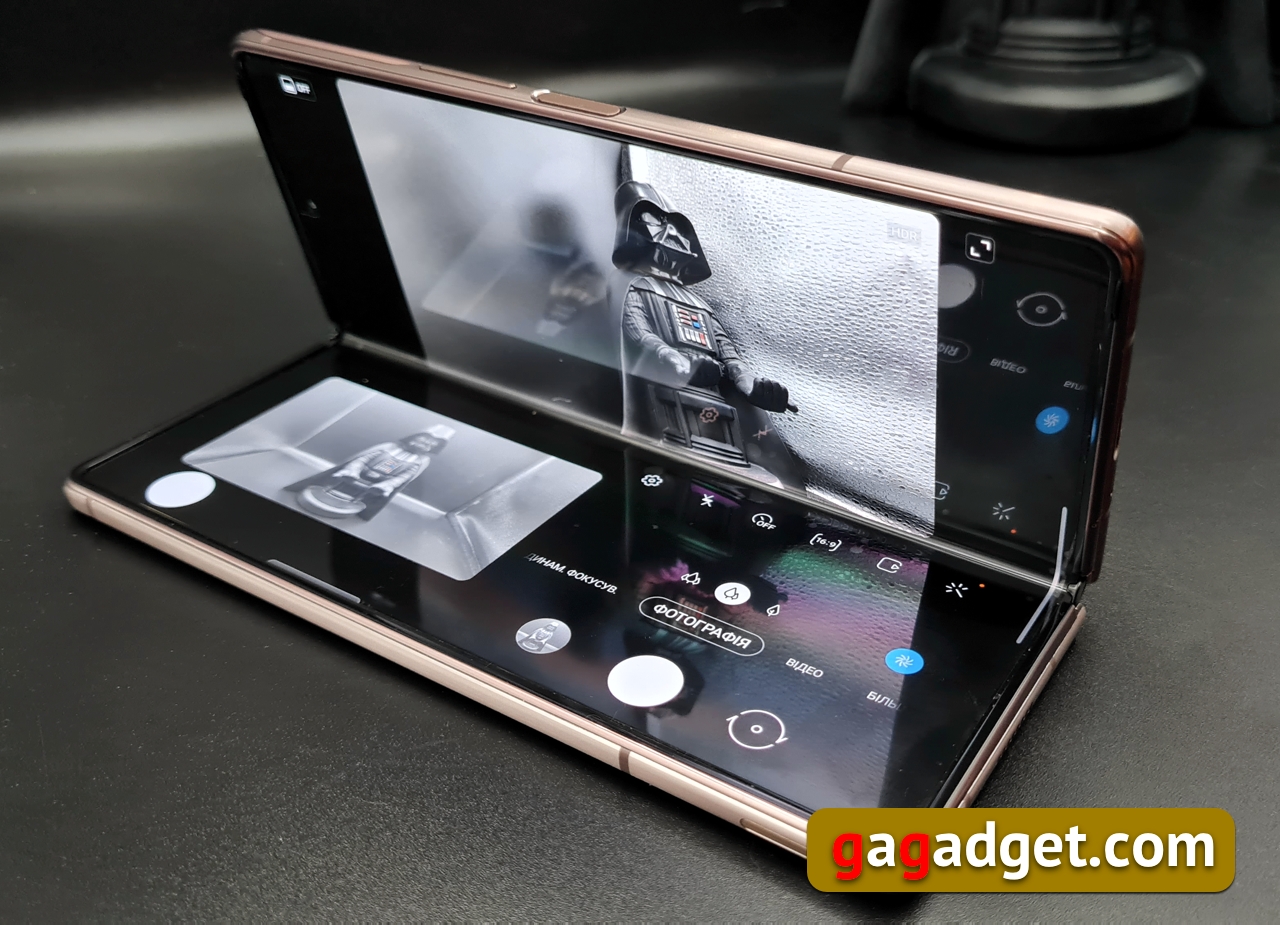
</ img>
It would be strange and even naïve to think that flexible displays appeared out of nowhere.In fact
At CES 2013, Samsung showeda working prototype of such a display. And already in 2018, at the Samsung conference for developers, held in San Francisco, a working prototype of such a smartphone with a folding display was shown. There was only a year and a half left before the announcement of the first Galaxy Fold.
How is a foldable OLED display
In essence, a flexible OLED display is the sameThe display is like any other, but uses a plastic substrate instead of glass, which provides it with flexibility. A layer of electroluminescent organic semiconductors (which, in fact, are called OLED) is already applied to it. The plastic backing is made of the type polyethylene terephthalate (aka polyethylene glycol terephthalate, PET, PET, PET, PETG, Dacron, Mylar - it has a ton of trademarked marketing names). We regularly use products made from it, such as plastic drink bottles. These are the same PET bottles (patented, by the way, back in 1973), which use the properties of plastic to become transparent when heated, then cool sharply after taking the required shape. These materials are strong and wear-resistant, but it only seems that making a flexible OLED display based on them is a matter of technology. In fact, it was necessary to solve a number of problems associated with them. For example, encapsulation - upon contact with moisture and air, OLED materials are destroyed. And regular bending (we plan to bend the screen hundreds of thousands of times while working with a smartphone) creates mechanical stress (tension) in the materials. That's why it took so long to solve all these problems and we were able to see production devices with flexible displays.
Samsung's foldable display innovation
Given that the origin of the foldable substrateThe Samsung Galaxy Z Fold2 display comes from PET, the company still calls its material glass. And she came up with a special name for it: UTG or Ultra Thin Glass - ultra-thin glass.

</ img>
A very interesting solution is also used forimplementation of a feature called Flex Mode. We will talk about what it gives to the user in a separate post, but now we will touch on the mechanical implementation of the ability to fix the open screen at different angles. The developers of the smartphone called this engineering solution CAM Mechanism. It allows you to hold the screen and not close on its own at an angle of 75 and 115 degrees. The principle of operation of the mechanics can be seen in the gif below.
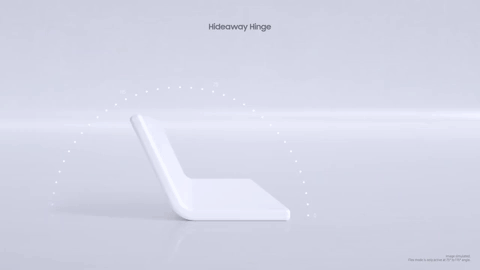
Internally, this mechanism looks and works like this:
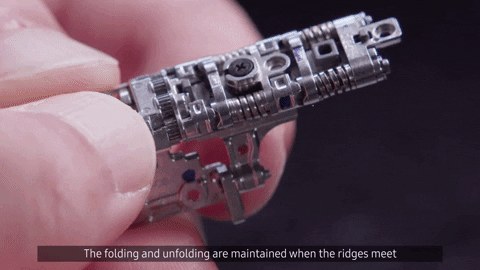
</ img>
The hinge uses four dual CAM modules - one pair on each side of the foldable display:

</ img>
In addition to the complex mechanics, there were alsoone problem with a bending display. In older clamshells, the swivel joint consisted of two different parts. The Galaxy Z Fold2 uses one large, unibody display that is not split in two. As a result, when bending it inevitably, the inner part of the flexible display should extend beyond the edges of the case. We overcame this problem by creating two virtual axes, between which the fold of the bent screen is hidden.
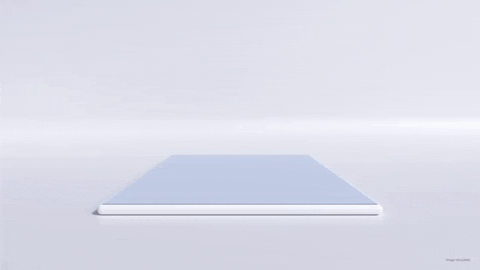
</ img>
Do you think that's all? No matter how it is.This fold requires extra space. And where there is free space, dust and all sorts of small crumbs from our pockets and bags constantly accumulate. All of them create additional stress on the inside of the display with each bending and extension. Samsung engineers considered more than a hundred (!) ways to solve the problem. And, in the end, they created a special Sweeper brush made of carbon fiber and nylon, borrowing the idea from powerful Samsung vacuum cleaners (for example, this one) with turbo brushes that rotate 20 times per second. Its bristles are only 0.87 millimeters high and clean the surface of the screen from the inside every time you open and close the smartphone.
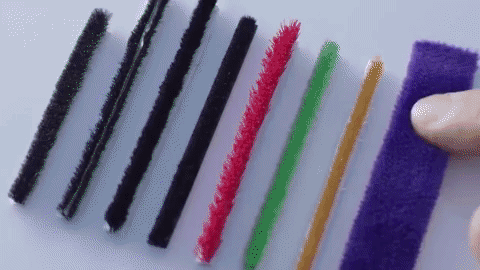
</ img>
What the foldable display looks like on the Samsung Galaxy Z Fold2
This is what the hidden mechanism looks likeSamsung Galaxy Z Fold2 hinge in action. It consists of 60 parts and is designed, according to the developers, to withstand 200,000 openings of the mechanism. That's more than a hundred disclosures a day for ten years.

</ img>
In practice it looks like this:
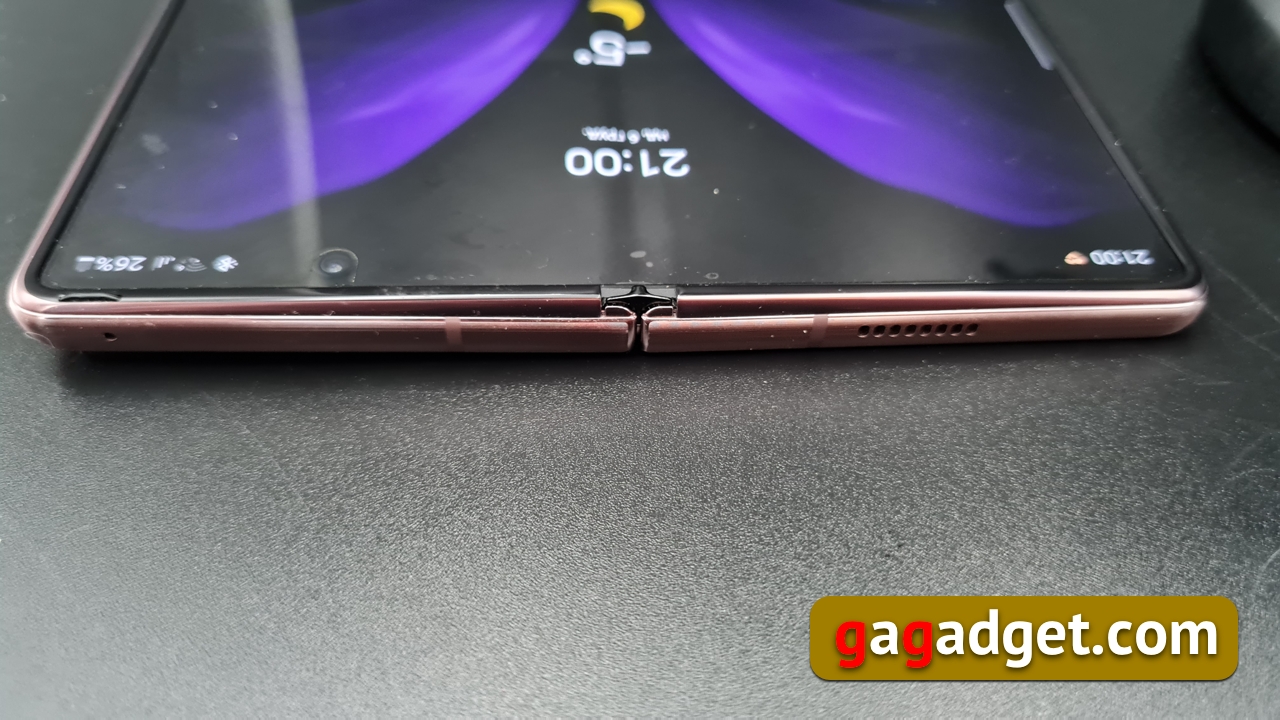
</ img>
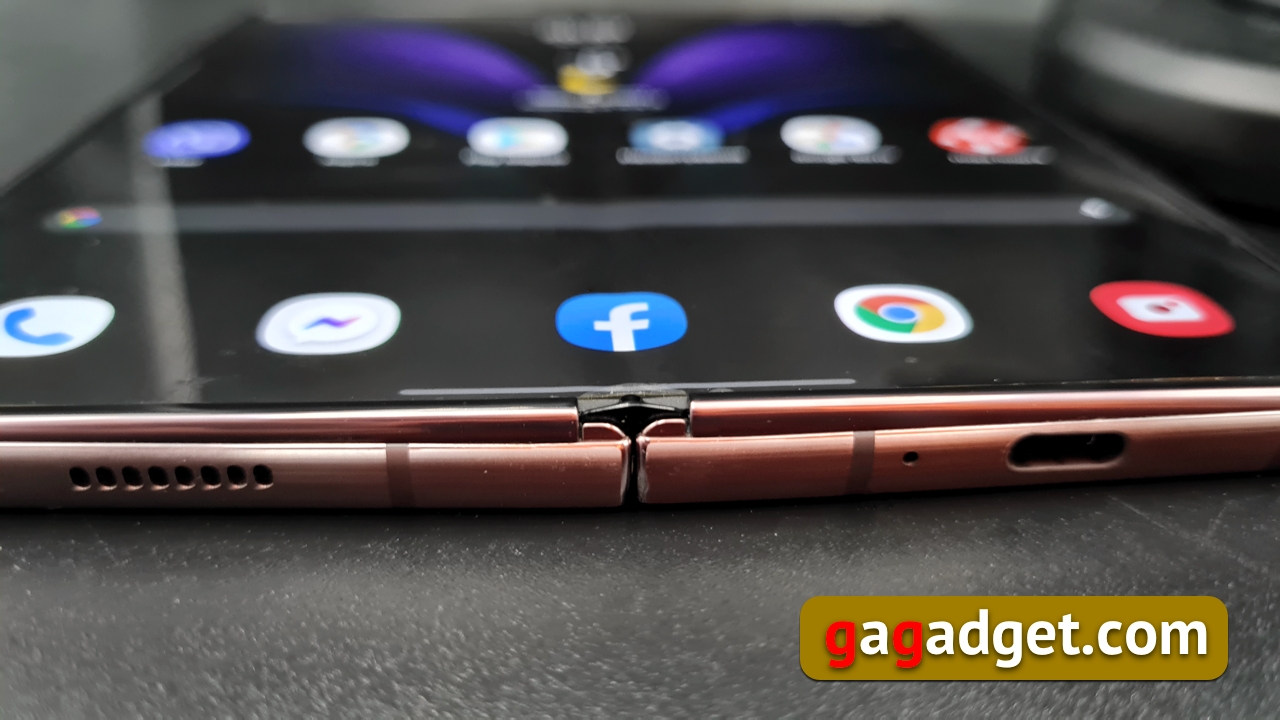
</ img>
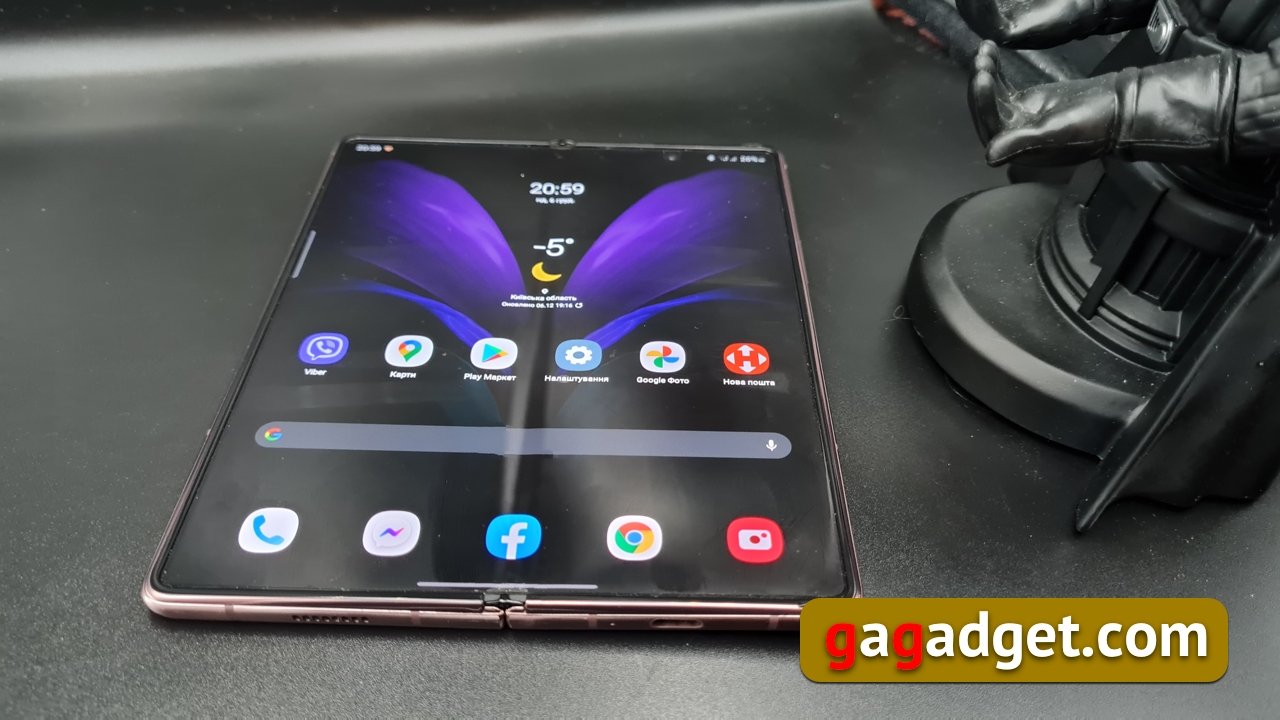
</ img>


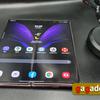
Hinges in semi-unfolded state, side view:
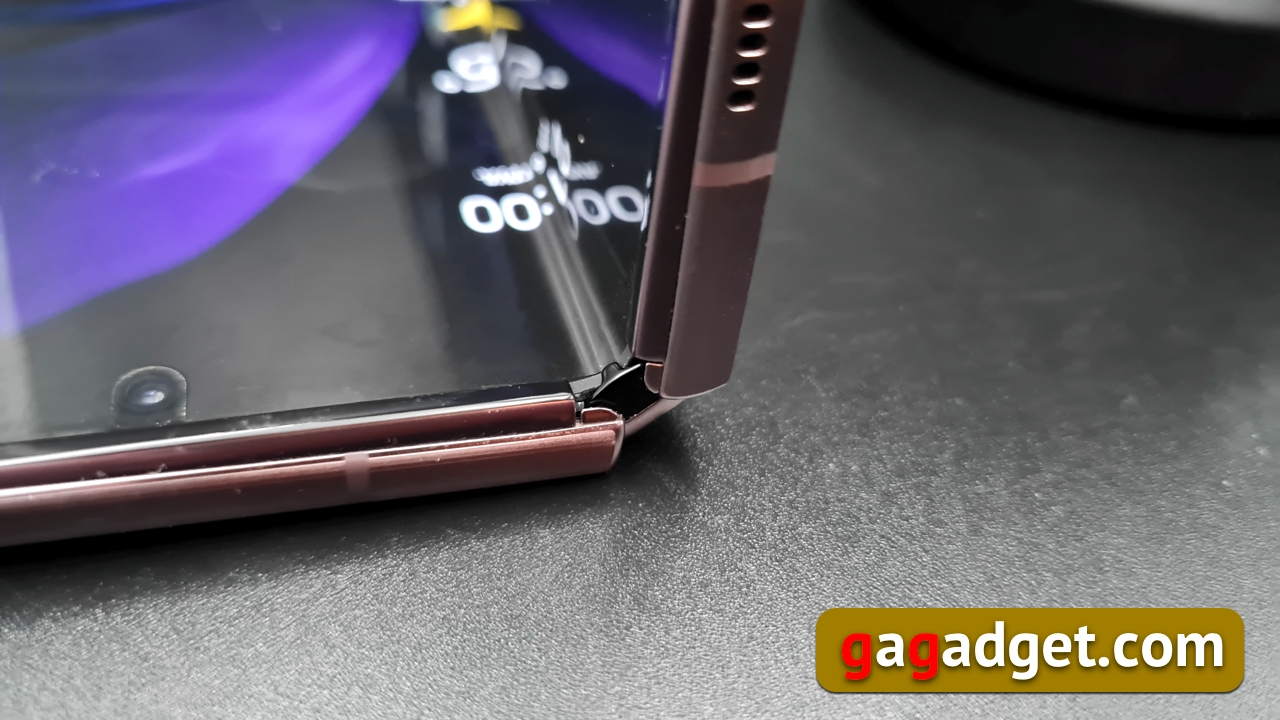
</ img>
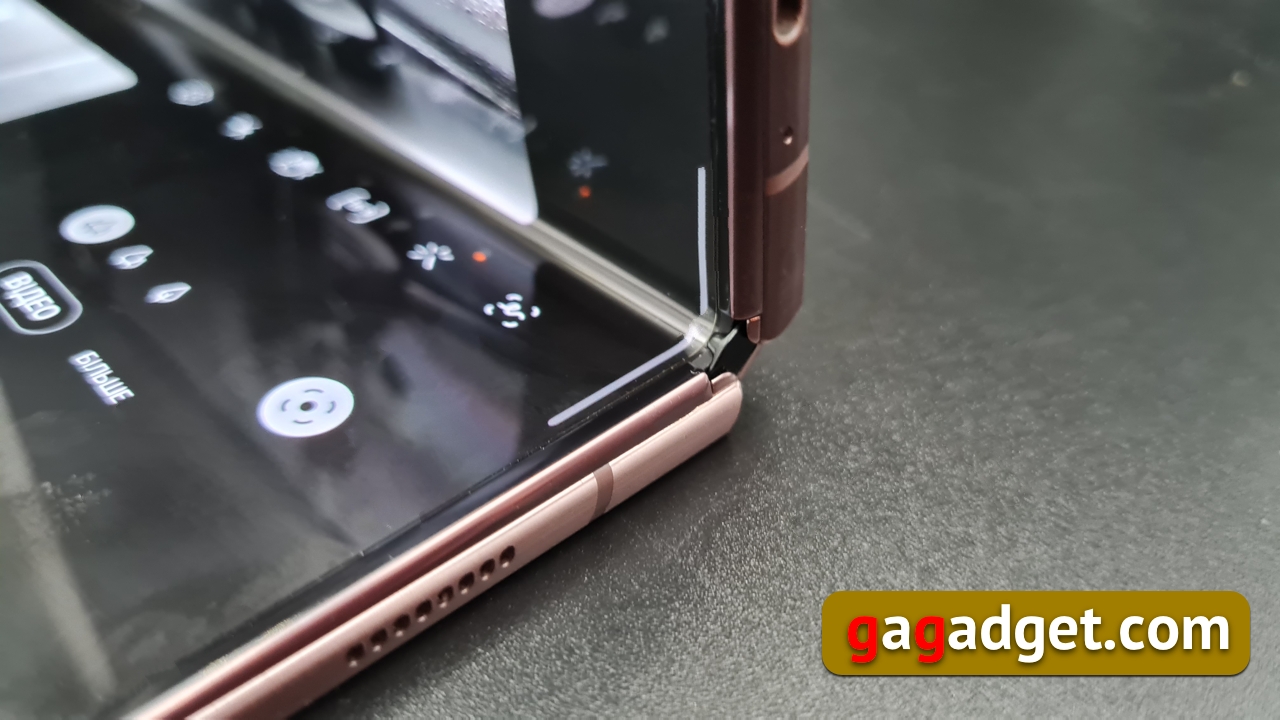
</ img>
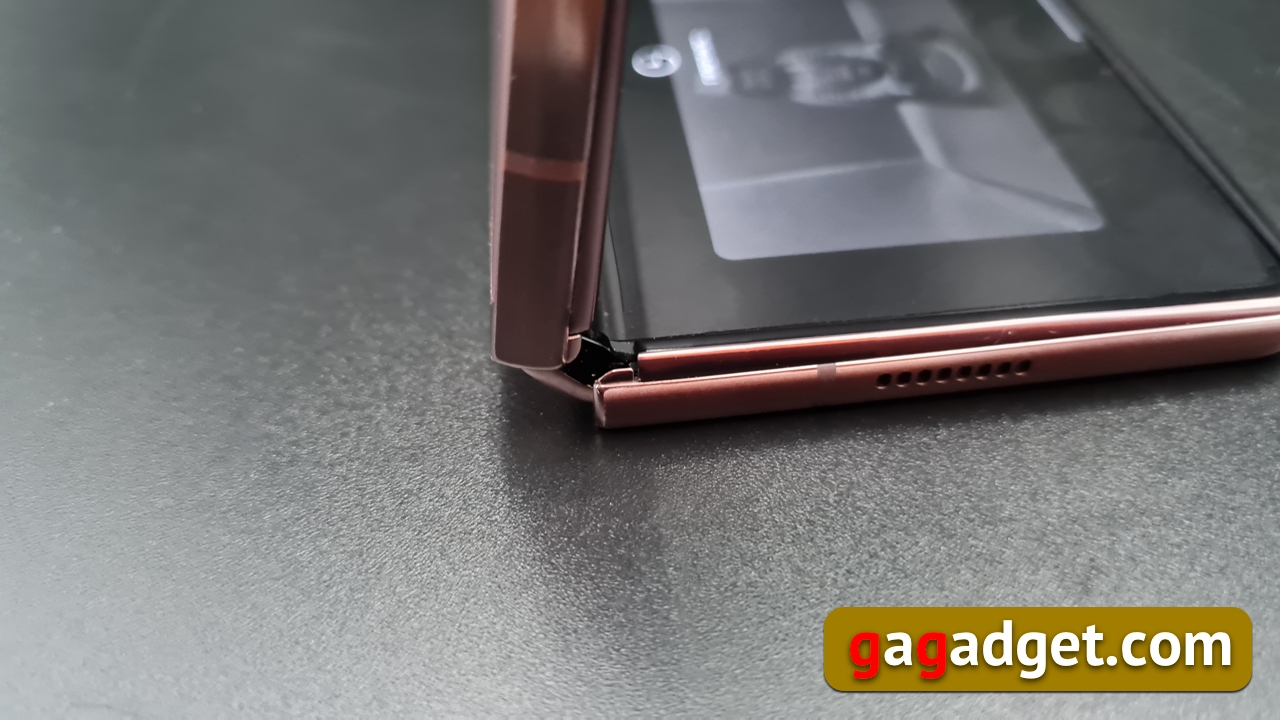
</ img>
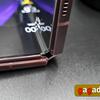


The outer side of the hinges.Everything looks neat and reliable. I used the first Fold for a couple of months and did not experience any problems working with the flexible display. I've had the Fold2 for a few weeks now and the results are the same. All fears about how reliable the flexible screen is are removed after the first days of use. The main thing is to remember that the manufacturer does not recommend removing the protective film - this can lead to damage to the screen and failure of the smartphone display.
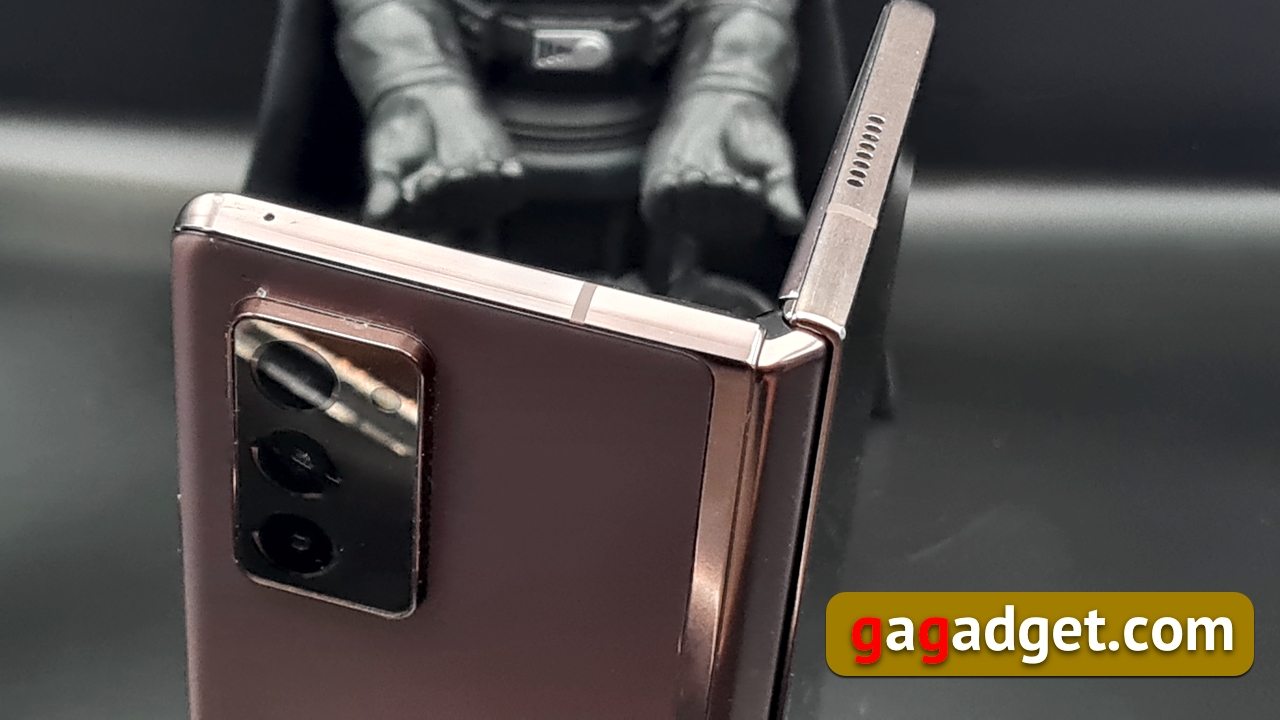
</ img>
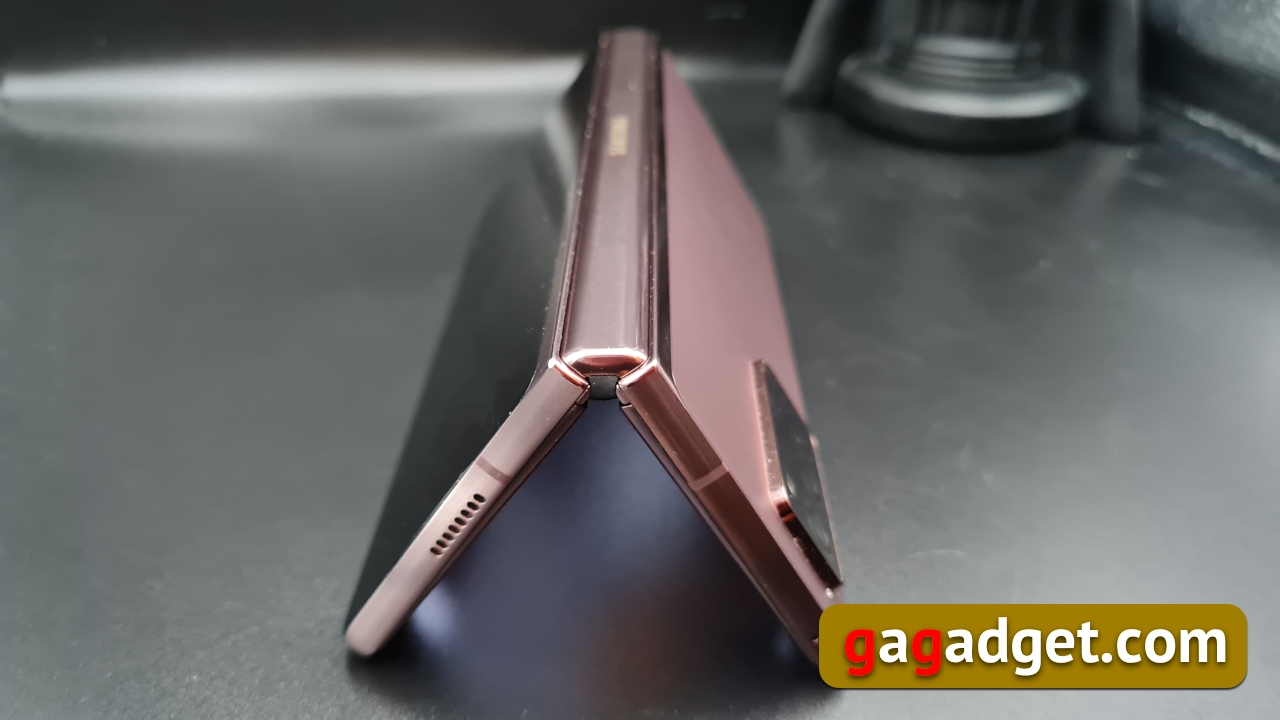
</ img>

</ img>


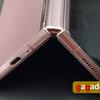
The fold of the screen can be easily felt when unfoldedcondition - it protrudes slightly, this is a feature of the technology; the fold of the more compact Z Flip can be felt in the same way. Perhaps in the future they will get rid of this, but for now it is so. Personally, the word doesn’t cause me any inconvenience at all, but I don’t exclude that there will be aesthetes who won’t like it.
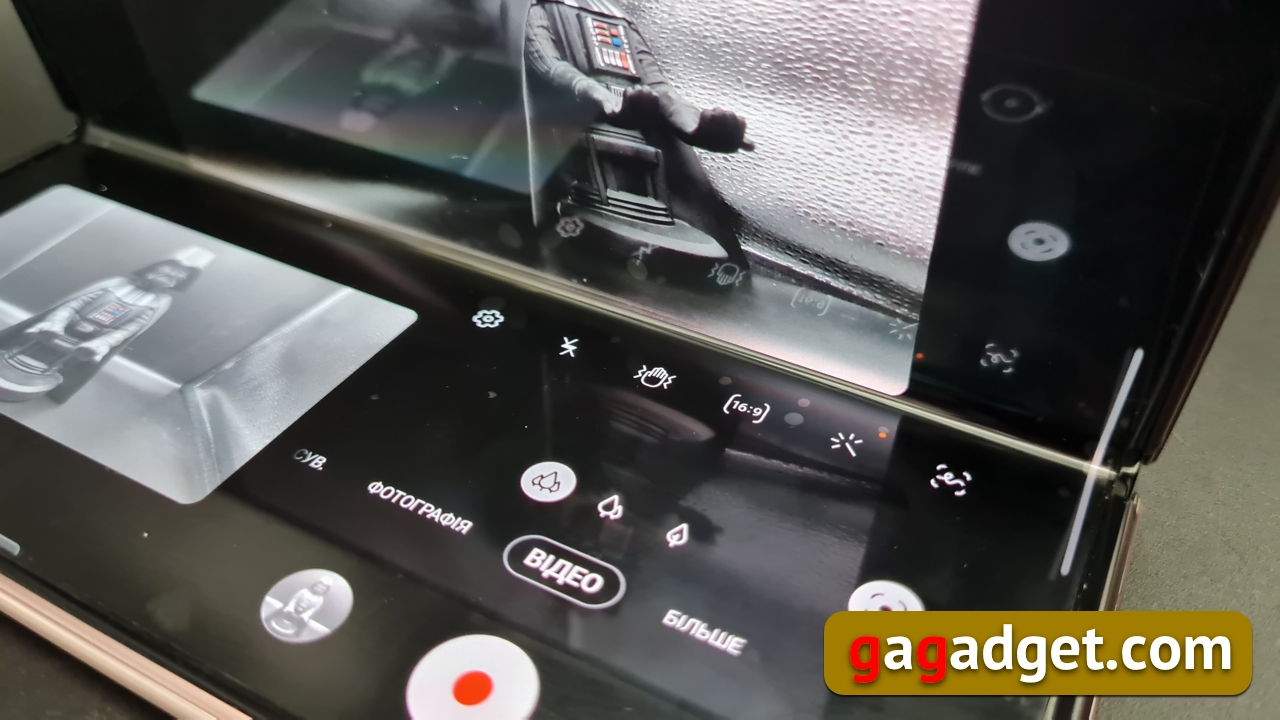
</ img>
Next time we will talk about how good both displays are in terms of a special device - a colorimeter.
Five things you need to know about the foldable display design of the Samsung Galaxy Z Fold2
- Its flexibility is ensured by a special substrate made of a special material called UTG (ultra-thin glass);
- it has a complex hidden hinge mechanism, consisting of 60 parts;
- a special CAM mechanism provides display opening of 75 and 115 degrees for working in Flex Mode;
- under the screen is a Sweeper brush with 0.83 mm bristles that cleans the inside of the screen every time it is opened and closed;
- The screen mechanism is capable of withstanding 200,000 opening-closing cycles (more than 100 times a day for 10 years).